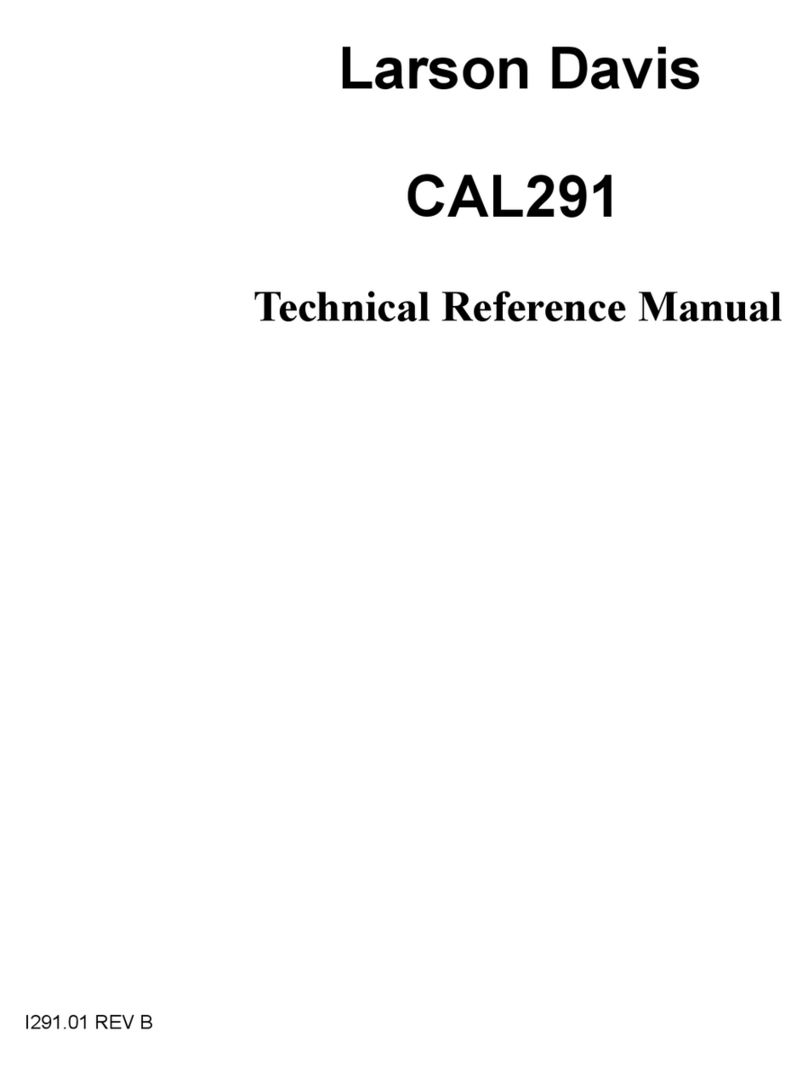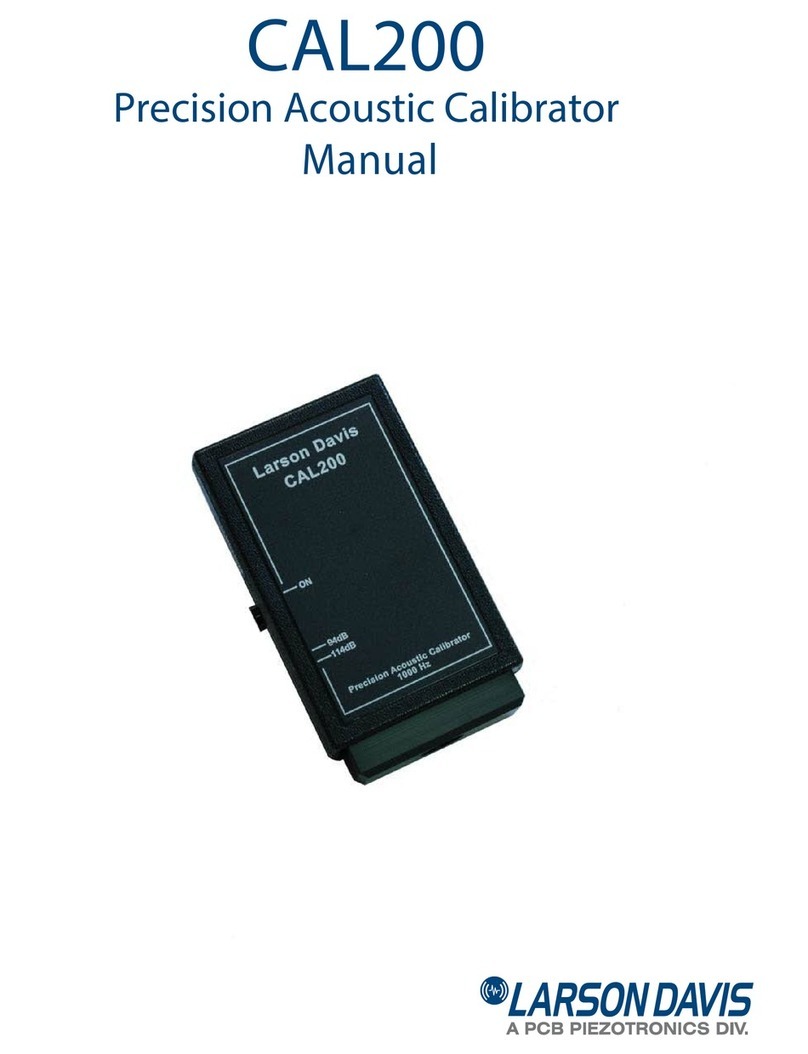CAL150 Technical Reference Manual Microphone Calibration 2-4
Step 4 With the microphone connected to the instrument
being calibrated, press the CAL150’s ON button.
With a fresh battery, the calibrator will issue a tone
for more than 60 seconds before automatically
shutting off (see note below).
Step 5 Make a reading. If the reading is not within
tolerance, refer to the instrument’s manual for
instructions on how to adjust the instrument.
Step 6 Check the ambient noise level to insure that the
calibration was not influenced by noise from
external sources. The CAL150 needs to be on the
microphone but with the CAL150 signal off.
External noise levels lower than 89 dB SPL for the
114 dB level calibration, and 69 dB SPL for the 94
dB calibration level will influence the calibration
by less than 0.015 dB.
As the battery becomes weaker, the calibration tone will not
deteriorate, but the operating time will decrease until the
time is too short to accomplish an adequate calibration.
Each time the ON button is pressed,
the CAL150 will run approximately
60 seconds on a fresh battery. Do not
press the ON button again to turn it
off. Wait until the calibrator times
out. It is not an ON/OFF button.
When making a sequence of measurements, a calibration
check and an adjustment (if necessary) of the instrument
should be made at the beginning. At the end of the
measurement sequence, the calibration should be checked
again. The inaccuracy of the measurements will be at least
as large as the difference between the level measured for the
initial calibration (or calibration check) and the level
measured for the final calibration check.
Calibration History
Larson Davis strongly recommends that a history of each
calibration adjustment be kept for each piece of equipment.
Normally, most modern equipment requires little or no
adjustment once the initial calibration is performed.
Systematic drifts are possible, and these should be recorded
for corrective action.
Most Larson Davis sound level meters keep a history of each
calibration change that can be printed before an overall reset.
Please refer to the respective instrument manuals for details.





























